September 6th, 2025
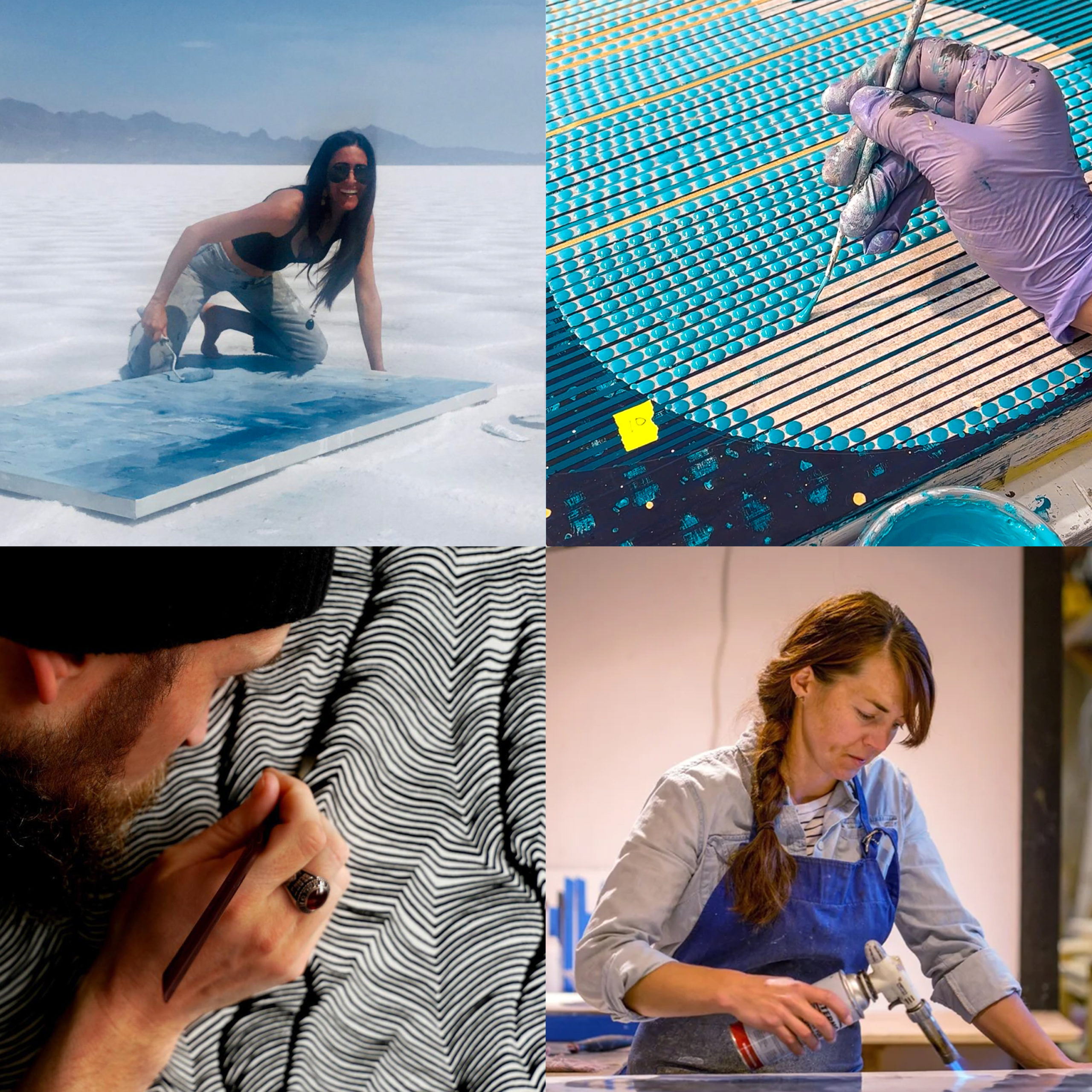
We live in a moment when art can be conjured in seconds. A prompt typed into an AI generator yields an image as fast as the computer can render pixels. For many, this is a marvel — limitless possibilities, endless variations, instant gratification. Yet in this rush of algorithmic output, something essential risks being lost: the intimacy, imperfection, and soul that only human hands can bring to a work of art.
The more our world accelerates, the more we crave what only the slow, deliberate touch of an artist can give: originality you can feel.
At Gallery MAR, our artists embrace the opposite of “instant.” Their work is slow to emerge, shaped not by pre-trained data sets, but by years of practice, experimentation, and the ineffable chemistry between artist, medium, and moment. In a cultural landscape buzzing with digital speed, their processes feel almost radical.
The Tactile Language of Process
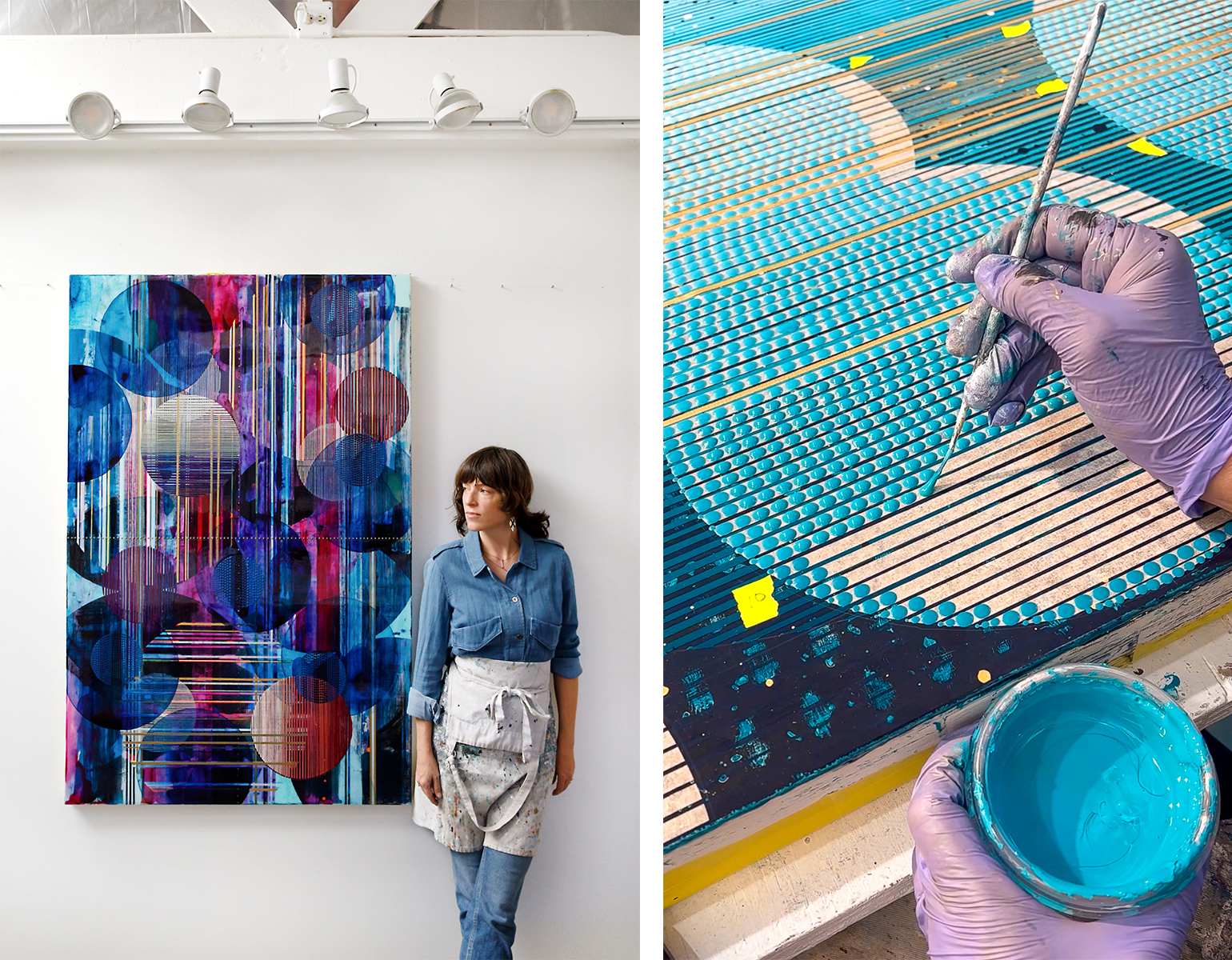
Gallery MAR Artist Nina Tichava
Take Nina Tichava, whose intricate mixed-media paintings can take weeks to months to complete. Each piece begins with layered washes of paint, stenciled patterns, and countless hand-applied marks — dots, lines, and brushstrokes that build into shimmering, patterned fields. The repetition is meditative, almost like weaving, each element reflecting the artist’s physical presence and patience. No algorithm can replicate the way her hand hesitates slightly, or how the weight of paint builds a texture you can feel under your fingertips.
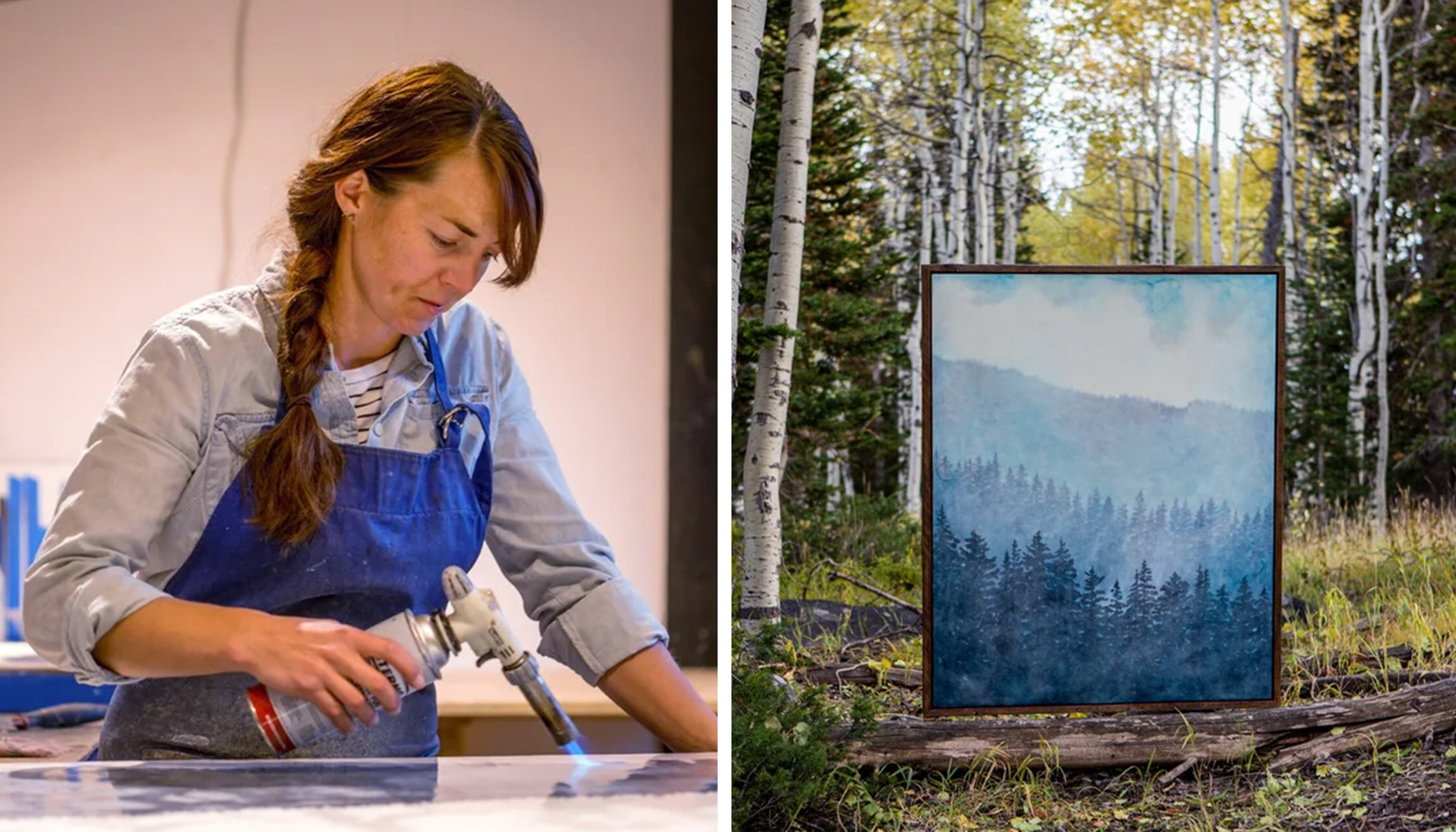
Gallery MAR Artist Bridgette Meinhold
Bridgette Meinhold creates her ethereal mountain landscapes using a centuries-old technique: encaustic painting with molten beeswax. Layer upon layer of tinted wax is applied, heated, and fused, often more than a dozen times, to achieve the soft atmospheric depth she’s known for. The scent of warm wax, the deliberate brushwork, the subtle scratches and incisions — these sensory elements exist only in the physical realm, connecting viewer to maker through the very surface of the work.
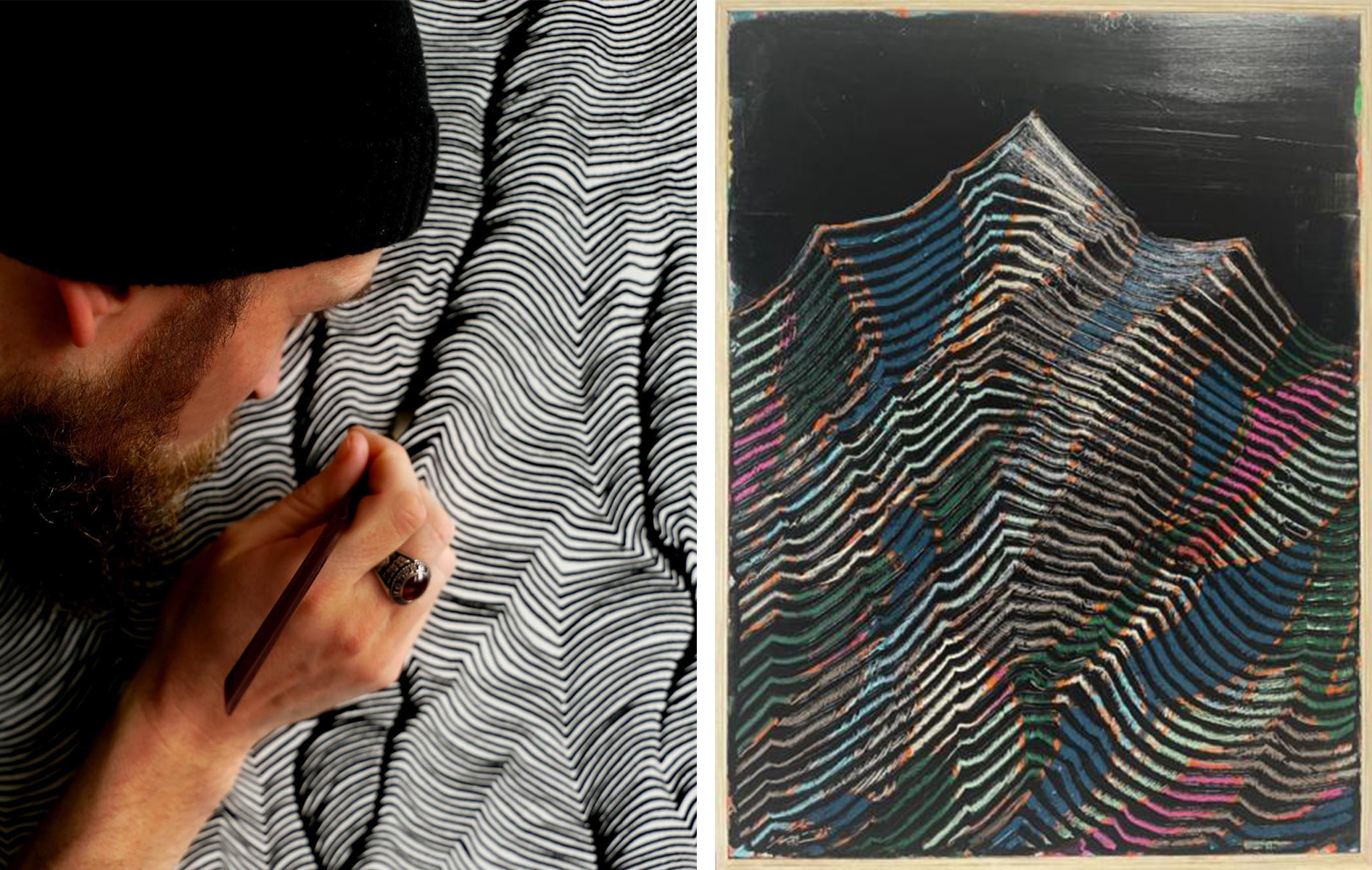
Gallery MAR Artist Havoc Hendricks
Havoc Hendricks takes minimalism to a meticulous extreme. His precise, geometric linework is drawn freehand: no rulers, no digital assistance. The sharp, clean patterns might seem machine-perfect at first glance, but close inspection reveals the subtle human irregularities that make them alive. It’s in these minute variations — the places where the hand resists perfect symmetry — that the viewer finds an emotional pulse.
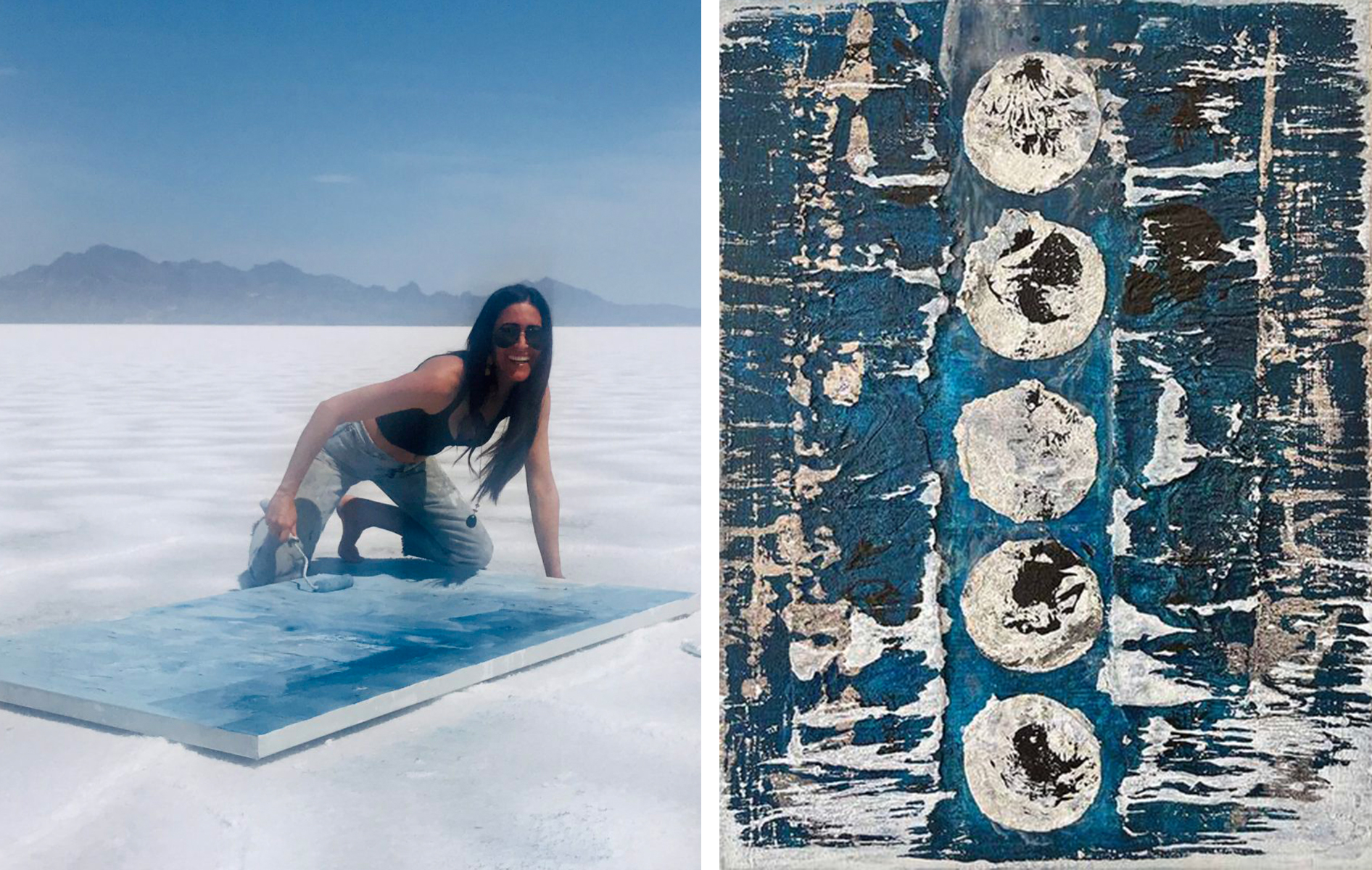
Gallery MAR Artist Samantha Da Silva
Samantha da Silva’s textured canvases are born from movement and material exploration. Using mineral pigments, metallic powders, and natural earth elements that she collects from the landscape itself, she works the surface with broad gestures, layering and scraping to reveal buried colors and histories. The tactile richness of her paintings invites touch, as though each work has its own geological story to tell — a direct contrast to the flat smoothness of a digitally generated image.
Why the Hand Still Matters
Original, handmade art carries a record of the artist’s body in motion. The tilt of a brush, the pressure of a fingertip, the unexpected drip of paint — these are not glitches to be corrected, but signatures of authenticity. When you stand before a work by one of Gallery MAR’s artists, you’re not just looking at an image; you’re encountering hours, days, sometimes years of lived experience compressed into a single surface.
AI can generate something that looks like art, but it cannot imbue it with the quiet accumulation of choices, revisions, and emotions that give handmade work its enduring power. It cannot mimic the way time feels different in the studio, where a painting can take shape at the pace of drying paint or cooling wax.
In an age when art can be made in milliseconds, perhaps the true luxury is work that takes its time — and asks you to do the same. Gallery MAR’s artists remind us that human hands still matter, not in spite of technology’s advances, but because of them. The more our world accelerates, the more we crave what only the slow, deliberate touch of an artist can give: originality you can feel.
Written by Veronica Vale
 Studio Stories: America Martin
Studio Stories: America Martin Gallery MAR Holiday Gift Guide 2025
Gallery MAR Holiday Gift Guide 2025 The Art of People - Capturing Sonder
The Art of People - Capturing Sonder